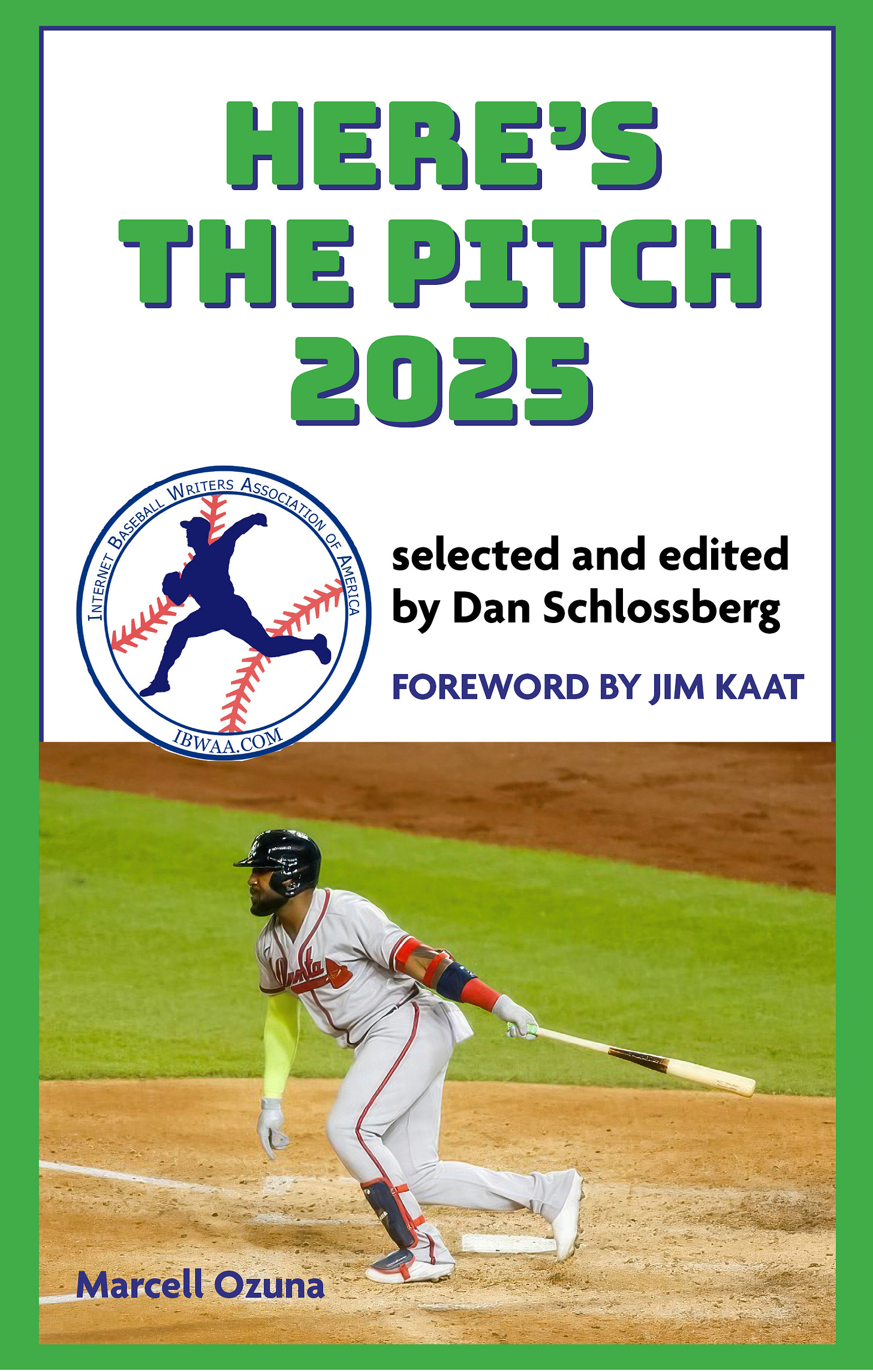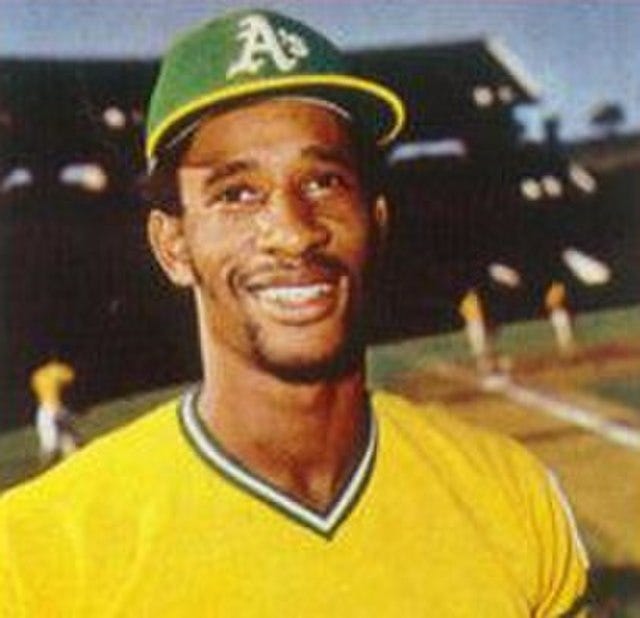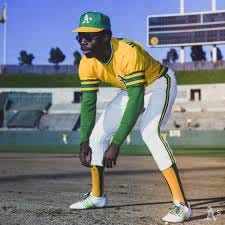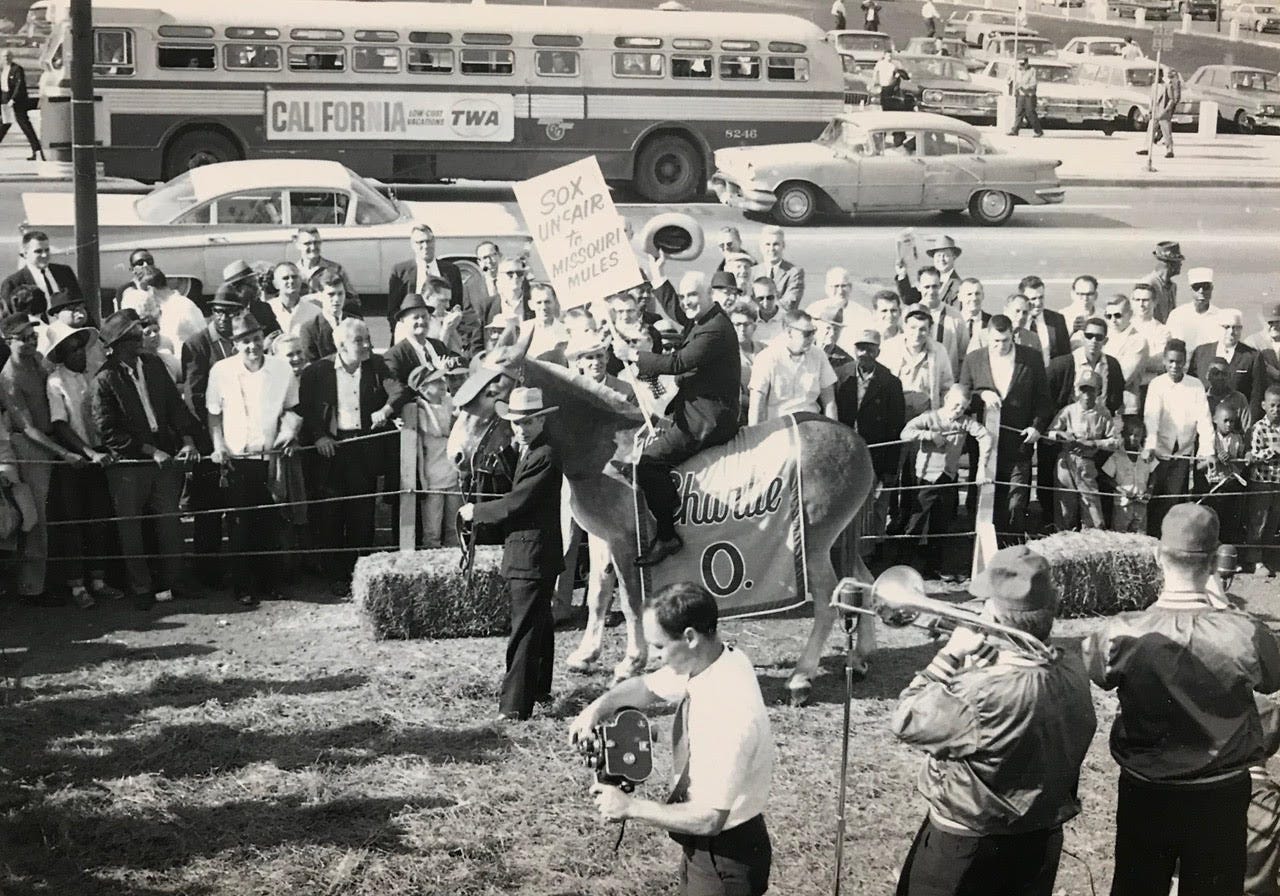On Washington's Birthday, Remembering a Player Named George Washington
. . . AND HOW ABOUT A PLAYER NAMED HERB WASHINGTON?
IBWAA members love to write about baseball. So much so, we've decided to create our own newsletter about it! Subscribe to Here's the Pitch to expand your love of baseball, discover new voices, and support independent writing. Original content six days a week, straight to your inbox and straight from the hearts of baseball fans.
GET HERE’S THE PITCH 2025
Selected and edited by Dan Schlossberg
(215 pp., $24.95)
This first annual collection of 35 great baseball stories, analysis, memories, and trivia for the baseball fanatics on your gift list (including you) is available now for $24.95 athttp://www.actasports.com.
But subscribers to this newsletter get 10% off on one copy or 20% off on two or more copies by calling 800-397-2282, talking to a real live person (not an AI robot), and ordering directly from the publisher. Offer good only through March 1, 2025!
Pregame Pepper
Did you know…
Roger Clemens rejoined the Yankees yesterday — not as a pitcher but as a celebrity spring training instructor . . .
Most major-league teams bring in alumni, sometimes in pairs, to help attract nostalgic fans to buy tickets for meaningless exhibition games . . .
The Atlanta Braves, for example, always import Dale Murphy, who won consecutive MVP awards but still stands outside the Baseball Hall of Fame . . .
Alex Bregman’s position with the Boston Red Sox remains to be determined, according to manager Alex Cora, but it could be second, third, or DH . . .
The Dodgers have signed five players to nine-figure deals in the last two off-seasons, generating a bloated $392 million payroll that is far ahead of the second-place Mets’ $321 million. No other team comes close to the $300 million mark . . .
Washington’s limited investment into free agency produced immediate conflict when the team acquired two first basemen, Josh Bell and Nathaniel Lowe.
Leading Off
George Washington, Right Fielder
By Paul Semendinger
I enjoy baseball research that takes me in different directions and takes me on the path to learning new things about the sport I love.
For this article, I was originally going to determine the greatest major-league player named Washington. I thought of Claudell, U.L., and Ron before heading to Baseball-Reference to find others. It was there that I found an obscure player named, of all things, George Washington. He became my focus.
George Washington, actually named Sloan Vernon Washington but nicknamed George for obvious reasons, played for the Chicago White Sox in 1935 and 1936. It was a short-lived big-league career.
In 1935, Washington patrolled right field for the White Sox. No player on the team played in more games at that position that year. Washington handled himself well enough it seems.
He played 79 games in right. At the plate, he batted .283 with eight homers and 47 runs batted in. It wasn't a bad showing, though the Chicago club possibly could have expected more from him because he was a star batsman in the minor leagues. When one looks at his minor-league batting stats, across each level, it is clear that player could hit.
As he climbed the ladder to the majors, George Washington tore the cover off the ball.
In D-Ball in 1931, he hit .312 in 13 games (his first as a professional)
Washington started the 1932 season in D-Ball again. In 19 games, he batted .400 and was moved up to A where he batted .350 over 89 games.
In 1933, in A-Ball again, he hit .325 over 144 games.
In 1934, in Double-A, again over 144 games, he batted .367.
Things looked great for George Washington...
After his rookie season, Washington's second term wasn't as successful. He lasted just 20 games with the White Sox, batting only .180.
Washington then was sent back to the farm where he continued to mash the ball for many more seasons. He played in the minors through the 1942 season before, it seems, serving his country in the war. Washington returned to baseball in 1946 and played through the 1950 season. His 1947 season was especially notable. In B-Ball, he batted .404 over 141 games.
That 1935 White Sox team had some other interesting players, including outfielder Jocko Conlan who batted .286 over 65 games as an outfielder and pinch-hitter. 1935 was his last year as a player. He would eventually become one of the most famous umpires in major league history. Conlan is in the Baseball Hall of Fame.
Many people know that there were three DiMaggios that played in the major leagues. There were also, in that same period, three members of the Sewell family. The most famous was Hall of Famer Joe Sewell. Brother Tommy Sewell played one game for the Cubs in 1927. And also on that 1935 White Sox team was catcher Luke Sewell, who enjoyed a 20-year playing career.
Before becoming a big-leaguer, White Sox first baseman Zeke Bonura set the American record in the javelin throw in 1925.
The third baseman on that team was Jimmy Dykes. He was also the manager of the team. In his long career as a manager, Dykes would manage close to 3,000 games, but he never won a pennant.
Monty Stratton, for whom a Hollywood movie was made (he lost his leg in a hunting accident), was a pitcher on the team.
Sad Sam Jones, who had thrown a no-hitter in 1923, was on that team as well. Jones was, by then, at 42 years old, the oldest player in the major leagues. That 1935 season was the last of his long career.
Two other Hall of Famers played on the 1935 White Sox: Luke Appling and Al Simmons.
Finally, the pitcher who started the most games (31) for the 1935 White Sox was Vern Kennedy. His career came too soon for anyone to call him "Jack."
Paul Semendinger is Vice President of the Elysian Fields (Northern NJ) Chapter of SABR. The author of a host of award-winning books, Paul's next baseball book, another unique look at Yankees history, comes out in February 2026. He says good things are worth waiting for.
Cleaning Up
Herb Washington, First and Only Designated Runner
By Dan Schlossberg
Today, February 22nd, used to be a national holiday celebrating the birthday of George Washington, Revolutionary War general and first President of the United States.
Now morphed into President’s Day, which also embraced Abraham Lincoln’s Feb. 12 birthday, the date is still a fine time to celebrate all things Washington:
For generations, Washington was first in war, first in peace, and last in the American League.
Then there was U.L. Washington, a switch-hitting infielder who hit .251 during a career that spanned 10 years in the major leagues.
Claudell Washington, an outfielder, carved a niche in the record books by producing three-homer games in both leagues — besides being the only Claudell in baseball history.
Ron Washington, now the oldest active manager, turns 73 in April, although his woeful Los Angeles Angels (a club-record 99 losses last year) may put a few more gray hairs on his head. A two-time pennant winner with the Texas Rangers, he should have stayed put as third base coach for the Atlanta Braves under Brian Snitker, the oldest National League pilot at 69.
And then there’s Herb Washington, a world-class sprinter who got into 125 games over two seasons without ever getting an at-bat.
Brought into baseball by master innovator Charlie Finley, a one-man front office for the Oakland Athletics in the ‘60s and ‘70s, this Washington was much like his Colonial namesake.
He did things no one else could even consider.
Among other things, the black man from Mississippi had 29 stolen bases and 29 runs scored in 1974, when he helped the A’s reach and win their third straight world championship. He actually got into 92 games and managed to get caught stealing 16 times but Washington was more positive than negative, though he did occupy a valuable roster spot.
The team brought him back for 13 games, four more runs, and two more stolen bases in 1975 before Finley realized the designated runner was ahead of its time (even the designated hitter, which the enigmatic owner openly promoted, was only three years old that season).
A stringbean of a ballplayer at 6 feet and 170 pounds, the former Michigan State speed merchant drifted into obscurity with one major-league record: the only non-pitcher to get into more than 100 career games without a single at-bat. He was also the only man with more stolen bases than plate appearances.
The problem with Finley’s Washington was insufficient knowledge of baseball. He was picked off far too often (16 times in ‘74) and therefore didn’t use his burner speed to full advantage. But watching him fly around the bases was memorable, to say the least.
Had The Freeze been running in Atlanta then, Washington might have beaten him across the finish line.
Herb Washington never pitched and never batted but played major-league baseball. He wore the green-and-gold of Finley’s A’s when they were the pride of Oakland and the best team in baseball.
For that, both the runner and the owner who signed him will always be remembered.
P.S. Finley should have been enshrined in the Baseball Hall of Fame years ago, joining Bill Veeck and Larry MacPhail as innovative owners who changed the game.
Former AP sportswriter Dan Schlossberg of Fair Lawn, NJ is the author of 42 baseball books, including Hank Aaron biographies written 50 years apart. His email is ballauthor@gmail.com.
Timeless Trivia: 50 Years Since Finley’s A’s Won
Charlie Finley always signed his name “Charles O. Finley,” insisting the middle initial stood for Owner.
During his tenure as owner of the Athletics, first in Kansas City and then in Oakland, the team went from laughingstock to world champion — even though Finley, and front-man Carl Finley, his cousin — were the lone denizens of the front office. In fact, Charlie was an absentee owner who ruled by telegraph and telephone.
The 2025 season is the 50th anniversary of the Oakland team that won its fifth consecutive divisional crown, cementing its reputation as a mini-dynasty.
Sometimes called “the Mustache Gang,” after Finley paid players $300 each to grow facial hair, the A’s did the green & gold proud, sandwiching AL West division crowns around three straight world championships, in 1972, 1973, and 1974.
In those halcyon days before free agency, the Athletics had loaded rosters, featuring such hitters as Reggie Jackson, Joe Rudi, Sal Bando, and Gene Tenace plus pitching stars Vida Blue, Ken Holtzman, and Rollie Fingers. The latter was a closer who came in early to put games on ice.
Finley proved a master manipulator, playing Whack a Mole with his players all season. Some 40 players wore in his employ that season, when the A’s used 14 pitchers and even tried a designated runner when none was listed in the official rules.
The owner feuded with everyone from stop-gap manager Alvin Dark to his players — especially Jackson — but still managed to make things work. Dark had earlier managed for Finley in Kansas City but did considerably better with a better ballclub, inheriting a world champion from Dick Williams after he resigned in anger and frustration.
Finley had that effect on people, from Bowie Kuhn to other owners, but no one could argue with his success. In fact, he lived by a slogan that said, “Sweat Plus Sacrifice Equals Success.” On his desk was a placard that read, “S + S = S.”
Mercurial and enigmatic but innovative to a fault, Finley was colorful when other owners were dull. And there’s no earthly reason why the late Charlie O is not enjoying the view from the Hall of Fame gallery.
In 50 years, he’s certainly passed the test of time.
HtP weekend editor Dan Schlossberg of Fair Lawn, NJ covers baseball for forbes.com, USA TODAY Sports Weekly, Sports Collectors Digest, and many other outlets. He’s also written 42 baseball books. Dan’s email is ballauthor@gmail.com.
Know Your Editors
HERE’S THE PITCH is published daily except Sundays and holidays. Benjamin Chase [gopherben@gmail.com] handles the Monday issue with Dan Freedman [dfreedman@lionsgate.com] editing Tuesday and Jeff Kallman [easyace1955@outlook.com] at the helm Wednesday and Thursday. Original editor Dan Schlossberg [ballauthor@gmail.com], does the weekend editions on Friday and Saturday. Former editor Elizabeth Muratore [nymfan97@gmail.com] is now co-director [with Benjamin Chase and Jonathan Becker] of the Internet Baseball Writers Association of America, which publishes this newsletter and the annual ACTA book of the same name. Readers are encouraged to contribute comments, articles, and letters to the editor. HtP reserves the right to edit for brevity, clarity, and good taste.







